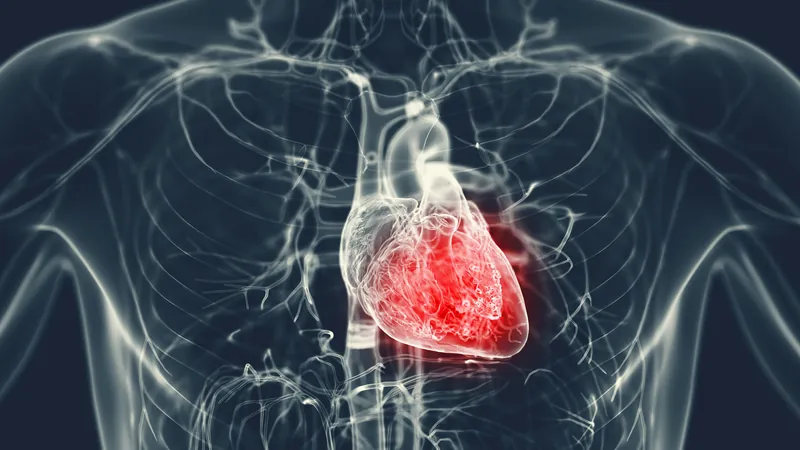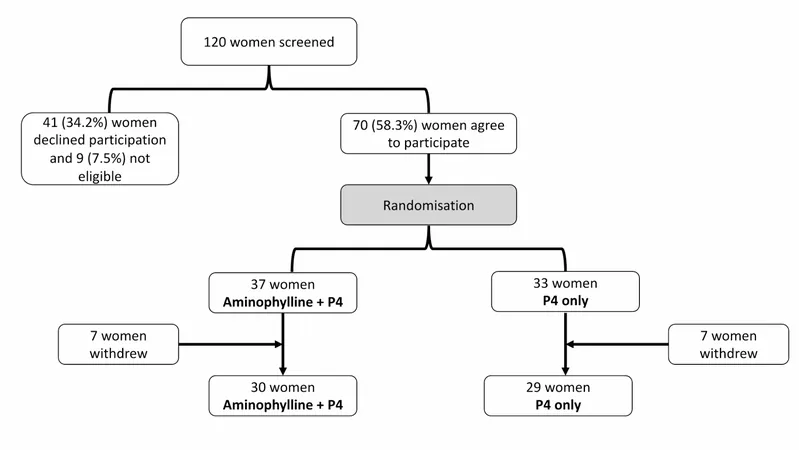
Revolutionary Insights into Recurrent Pericarditis: The Impact of CMR and Rilonacept
2025-04-02
Author: Rajesh
Groundbreaking Research in Cardiac Imaging
In groundbreaking research published in the Journal of the American College of Cardiology, cardiac magnetic resonance (CMR) imaging has been shown to play a crucial role in diagnosing, characterizing, and monitoring recurrent pericarditis in patients starting treatment with rilonacept (Arcalyst), a medication that targets interleukin-1 (IL-1). This study highlights the increased utilization of CMR among patients with complex cases of recurrent pericarditis, an autoinflammatory disorder.
Understanding Recurrent Pericarditis
Recurrent pericarditis is a chronic condition typically characterized by inflammation of the pericardial sac surrounding the heart, often triggered by viral infections or systemic inflammatory diseases. Patients generally experience significant chest pain, which can worsen with certain movements, leading to a decrease in quality of life. Effective imaging techniques, like CMR, can reveal signs of inflammation and fluid accumulation in this area, facilitating more accurate assessments and treatment plans.
The RESONANCE Registry
The RESONANCE registry, launched in March 2021, aims to enhance understanding of the natural history of recurrent pericarditis and assess its clinical and economic impacts. Enrolling both adults and children, the registry seeks to support data-driven management strategies and evaluate the effectiveness of rilonacept in real-world applications. With a cohort of 103 patients around a median age of 49.7 years, the findings indicated that approximately 56% of the participants were female, and the median duration of the disease was one year.
Key Findings from the Study
Among these, 45% underwent CMR prior to starting rilonacept. Notably, data showed that nearly 59% of those imaged displayed signs of pericardial inflammation. This highlights the importance of CMR in identifying patients whose conditions may require more intensive management strategies. Interestingly, the study found that a significant proportion of those who started rilonacept did not have a CMR performed, indicating a need for better communication and possible systematic improvement in patient evaluation processes.
Expert Opinions on CMR Utilization
Expert insights suggest that despite the potential of CMR, clinical criteria primarily influenced when it was used, suggesting that more complex cases were prioritized for imaging. CMR has proven to be a valuable tool in the detection and monitoring of various cardiovascular conditions, and its application in recurrent pericarditis could lead to more tailored treatment approaches.
Future Directions in Pericarditis Research
As this field of study continues to evolve, the researchers advocate for enhanced collaboration among clinicians, patients, and industry stakeholders to address the significant unmet needs for individuals suffering from recurrent pericarditis. The commitment to collecting real-world data through the RESONANCE registry could pave the way for refined treatment recommendations and improved patient outcomes.
Conclusion and Outlook
Stay tuned as we continue to track advancements in pericarditis research, and discover how these findings can influence future treatment methodologies!




 Brasil (PT)
Brasil (PT)
 Canada (EN)
Canada (EN)
 Chile (ES)
Chile (ES)
 Česko (CS)
Česko (CS)
 대한민국 (KO)
대한민국 (KO)
 España (ES)
España (ES)
 France (FR)
France (FR)
 Hong Kong (EN)
Hong Kong (EN)
 Italia (IT)
Italia (IT)
 日本 (JA)
日本 (JA)
 Magyarország (HU)
Magyarország (HU)
 Norge (NO)
Norge (NO)
 Polska (PL)
Polska (PL)
 Schweiz (DE)
Schweiz (DE)
 Singapore (EN)
Singapore (EN)
 Sverige (SV)
Sverige (SV)
 Suomi (FI)
Suomi (FI)
 Türkiye (TR)
Türkiye (TR)
 الإمارات العربية المتحدة (AR)
الإمارات العربية المتحدة (AR)